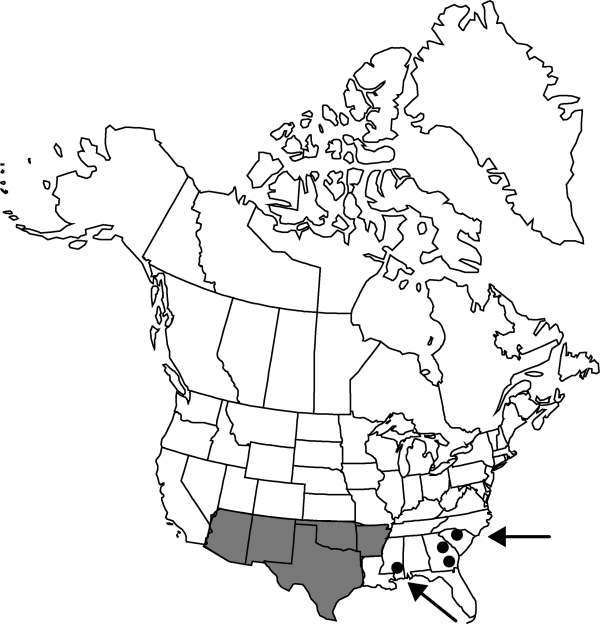Portulaca umbraticola
in A. von Humboldt et al., Nov. Gen. Sp. 6: 72. 1823.
Plants annual; roots fibrous. Stems prostrate to suberect; trichomes sparse at nodes and in inflorescence, stems otherwise glabrous; branches 5–20 cm. Leaf blades obovate, spatulate, or sometimes lanceolata, flattened, 10–35 × 2–15 mm, apex rounded to truncate; involucrelike leaves 4–5. Flowers 8–15 mm diam.; petals yellow or yellow tipped with red or copper, spatulate or obovate, 5–10 × 3–6 mm, apex acute or cuspidate; stamens 7–30; stigmas (3–)5–18. Capsules obovoid or turbinate, 3–5 mm diam., with encircling, expanded, membranaceous wing 0.5–1.5 mm wide proximal to suture. Seeds gray, round or elongate, flattened, 0.5–1 mm; surface cells stellate with long tubercles.
Distribution

North America, South America.
Discussion
Subspecies 3 (2 in the flora).
Portulaca umbraticola is a common weedy species of the southwestern United States, while in the southeastern United States it is usually restricted to sandy soils of granitic and sandstone outcrops. In 1982–1983, a new cultivar was introduced to the United States in hanging baskets, under the name Portulaca umbraticola ‘Wildfire Mixed,’ which appears to be selected from material from South America. There is no seed surface variability in any of the three subspecies.
Selected References
None.
Key
| 1 | Petals entirely yellow | Portulaca umbraticola subsp. coronata |
| 1 | Petals yellow tipped with red (copper) | Portulaca umbraticola subsp. lanceolata |